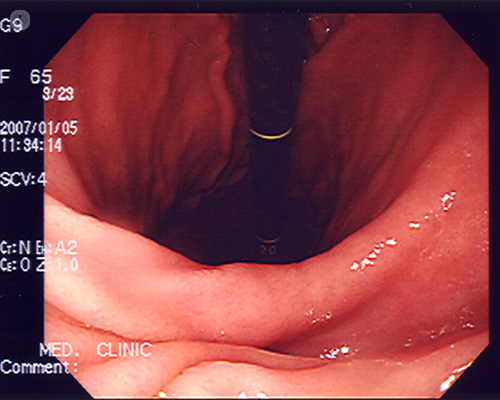

What is gastroscopy?
Gastroscopy is a clinical diagnostic test. Using a thin tube (an endoscope), the inside of the oesophagus, the stomach and the first part of the small intestine (the duodenum) can be visualised. The tube has a light and a camera on the end which sends images to a monitor during the investigation. Hence, a gastroscopy might be used to diagnose conditions related to the oesophagus, stomach and duodenum.

What does gastroscopy consist of?
Gastroscopy is performed with an endoscope, which is a thin flexible tube with a small camera at the end and, in some cases, light. This camera aims to obtain images of the inside of the oesophagus, stomach and duodenum. The procedure lasts around 15 minutes and the tube is inserted through the mouth and it is guided down the throat into the oesophagus and then stomach. The procedure is not painful, but a numbing spray may be used to numb the throat slightly before the tube is inserted.
Why is a gastroscopy done?
A gastroscopy would be done to look for abnormalities in the stomach and duodenum. You can obtain tissue samples for biopsies, remove polyps or determine the presence of some bacteria, such as the bacteria H pylori, which causes many peptic ulcers. During the gastroscopy procedure, bleeding ulcers can also be cauterised.
Preparation for gastroscopy:
In the weeks leading up to a gastroscopy, you may be instructed to stop taking certain medications. The stomach must be empty; you should avoid taking solid food from the previous night and you can only drink water. It is important, too, not to smoke before the test.
How does it feel during a gastroscopy?
The scan does not usually cause pain. However, it does cause a feeling of nausea that occurs when the tube is inserted through the throat, but a numbing spray can be used to make this less uncomfortable.
Gastroscopy risks:
Gastroscopy is very safe, but potential side effects could include mild abdominal pain. Other more serious side effects are, for example, the perforation of some organs, haemorrhages, infections and possible allergic reactions.
